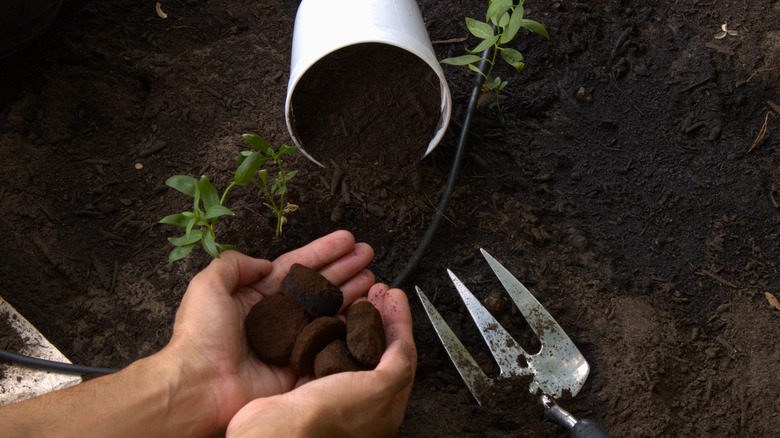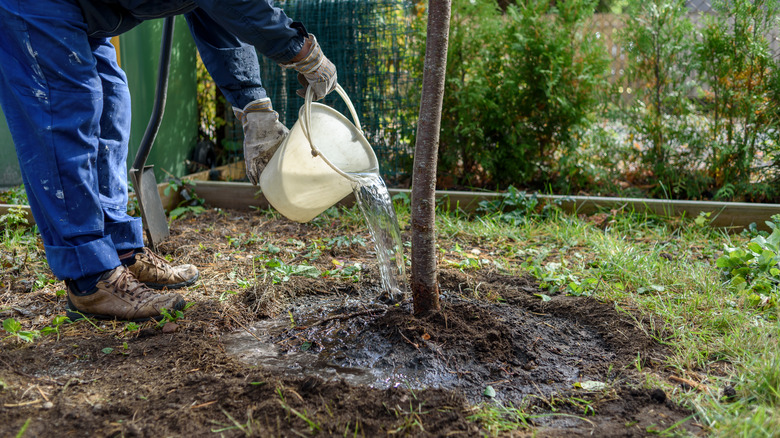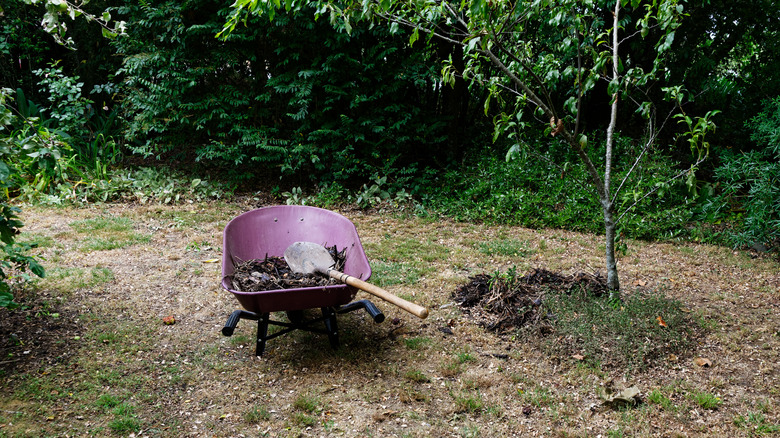Can You Fertilize Fruit Trees Using Coffee Grounds? Our Professional Gardener Weighs In
Many gardeners add used coffee grounds to their garden soil. Coffee grounds are a useful soil amendment that can be part of a sustainable gardening plan designed to reduce waste and reuse materials. They improve texture and drainage of soil, and add nutrients that help encourage healthy development of branches, foliage, and fruit. These qualities make coffee grounds a very useful and desirable soil amendment for fertilizing fruit trees.
The nutrients found in coffee grounds include calcium and nitrogen, as well as traces of beneficial minerals like magnesium, phosphorous, and potassium, all of which are good for improving the quality of soil. The nitrogen is made more available to plants as microorganisms in soil break down coffee grounds, causing a time release effect that is helpful for long-term plant growth. Coffee grounds also give a gentle boost to soil acidity, which is very beneficial for many fruit trees, especially apple trees, which prefer a slightly acidic soil.
In addition to improving soil health, coffee grounds used as a top dressing fertilizer will help to repel undesirable pests, such as slugs and snails, who dislike the texture on soil surfaces. There is some evidence the grounds may also repel mosquitoes and wasps, who are repelled by the strong scent of coffee. However, earthworms are attracted to the earthy fragrance, and every garden benefits from their soil activity, especially where there are trees planted. I always add plenty of coffee grounds to my soil mix when planting fruit trees and fruit plants like raspberries.
How best to use coffee grounds with fruit trees
There are several ways to use coffee grounds as fertilizer to benefit your fruit trees. For newly-planted fruit trees, mix coffee grounds into the soil when planting. This will give a slight boost to soil acidity, add beneficial nutrients, and create a well-draining soil environment. Add up to an 8-ounce cup of used coffee grounds to the planting hole, mixed in with the soil. As they begin to break down into the soil, the grounds will release nitrogen to help form healthy leaves on your fruit tree.
You can also water your newly-planted or mature fruit trees with leftover coffee. Wait until it's cooled off completely, though (don't pour hot liquid over tree roots, as it may injure them). You can collect your used coffee in a jar or bucket to save for tree watering. This is best done no more than once a week, and you should dilute the coffee by half with water.
Using leftover coffee grounds as mulch is easy: Simply spread them in an even layer around the base of your tree. Avoid having the grounds touch the base of the tree directly. Using coffee grounds as mulch in the garden should be done carefully, however. Layering the grounds too thickly may impede absorption of water at the base of your fruit trees, if the grounds form a dense crust. I have found that mixing the grounds with some compost, and layering no more than 2 inches thick, helps prevent a crust from forming.
Fertilizing with coffee grounds
Once your fruit trees are established, you can continue to fertilize them with coffee grounds and other soil amendments. There are several ways to do this. If you have fruit trees growing in containers, you should add fresh soil and amendments whenever you repot them to a larger container. Adding fresh potting soil and amendments help keep soil healthy and fertile.
Depending on what kind of fruit trees you have, they may have different fertilizer needs. Fertilizers have two main functions: stimulating growth (including flowering), and improving soil condition. It's all too possible to over-fertilize your fruit trees, which affects their fruit supply. A better approach is to avoid commercial fertilizers and add natural soil conditioners such as compost, peat moss, wood ash, and/or coffee grounds. When using coffee grounds, you're adding nutrients to the soil as well as improving texture.
As fruit trees grow larger, their roots may poke through the soil. Exposed roots may be vulnerable to damage from weather or other factors, so it's important to keep the roots well protected. In spring, I add a fresh layer of soil and mulch under my fruit trees to protect the roots and help them absorb nutrients for the growing season. I use a basic bagged topsoil, to which I add some used coffee grounds and wood ash, then a light layer of pine bark mulch. I do the same in the fall, but also add some composted manure, which breaks down slowly over winter, adding beneficial nutrients.


